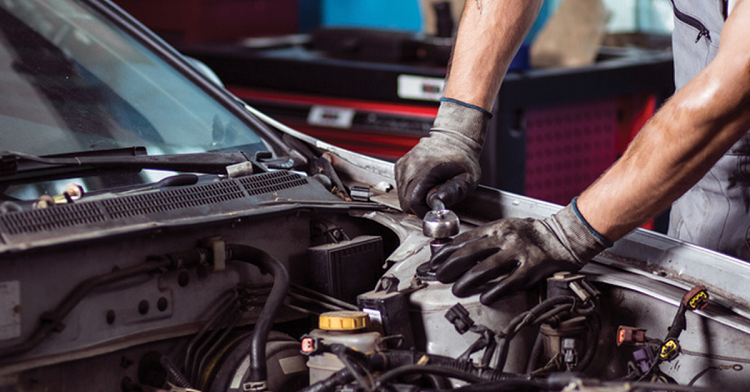Table of Contents
Unlocking the Secrets: What to Look for in a Trustworthy Clutch Repair Shop
Experience Matters: The Importance of Skilled Technicians
When it comes to clutch repair, one of the most important considerations is the experience of the technicians at the shop. Skilled technicians with years of hands-on experience bring invaluable insights into the intricacies of clutch systems that can only be gained through practical work. A well-trained technician is likely to have encountered a wide variety of clutch problems in different vehicles, equipping them with the ability to diagnose issues quickly and accurately.
Moreover, experienced technicians are more adept at utilizing modern diagnostic tools that can pinpoint problems beyond what might be noticeable during a routine inspection. This advanced knowledge not only streamlines the repair process but also minimizes the chances of recurring problems, leading to greater customer satisfaction. Before entrusting your vehicle to a shop, consider asking about their team’s credentials and specific experience related to your vehicle’s make and model. Some shops may even showcase awards or certifications that highlight their proficiency in clutch systems and general automotive repairs.
Customer Reviews: Navigating the Truth Behind Testimonials
In this digital era, customer reviews and testimonials can be a goldmine for those seeking quality service at a clutch repair shop. However, navigating through countless reviews can be daunting; some may be exaggerated or biased. To discern which reviews are reliable, look for patterns in the feedback rather than focusing on isolated experiences. Pay attention to comments regarding the quality of work, turnaround time, customer service, and pricing transparency.
Additionally, it’s wise to check reviews across multiple platforms such as Google, Yelp, and social media to gain a broader perspective. Businesses with consistent praise across various platforms may likely be more trustworthy. Furthermore, engaging with these reviewers directly—whether they’re satisfied customers or those who had negative experiences—can provide deeper insights into the shop’s strengths and weaknesses. Armed with this information, you can approach your clutch repair shop choices with confidence.
Certifications and Affiliations: Can They Really Make a Difference?
Certifications and affiliations can significantly influence the level of service you receive at a clutch repair shop. Shops affiliated with well-known automotive organizations or technical institutes often adhere to high industry standards due to the rigorous training and ongoing education their technicians must undergo. This not only ensures that they are up-to-date with the latest repair technologies and techniques but also communicates their commitment to excellence in customer service.
Certifications from manufacturers also hint that the shop has specialized training for specific brands, which can be crucial for high-performance vehicles or luxury models. These credentials indicate a commitment to quality that can reassure customers that they will receive expert care. While certifications and affiliations are not the sole indicators of a shop’s reliability, they certainly bolster its credibility and can guide you towards making an informed decision.
Understanding Clutch Repair: Common Issues and Solutions for Your Vehicle
The Clutch’s Role: Exploring Its Functionality and Common Problems
The clutch is a pivotal component of a vehicle’s transmission system, allowing drivers to change gears smoothly and engage or disengage the engine’s drive to the wheels. Despite its vital role, many drivers are unaware of how it operates and the typical issues that may arise. Generally, clutches consist of several components, including the clutch pedal, pressure plate, clutch disc, and flywheel, each playing an essential part in the clutch system’s success. Understanding these components aids in recognizing symptoms of clutch failure and addressing them promptly.
Common problems often manifest as difficulty in shifting gears, slippage of the clutch, noises while engaging, or a considerably stiff pedal. Each of these symptoms can indicate problems ranging from worn-out clutch discs to issues with the hydraulic system or cable adjustments. It’s crucial to diagnose these issues early; delayed attention can lead to further damage and costly repairs. Regular check-ups can help in identifying potential failures, allowing for timely interventions which can save both time and money in the long run.
Symptoms of a Failing Clutch: What to Watch For
Being aware of the symptoms of a failing clutch can be the key to preventing a complete breakdown. Drivers should be vigilant for signs such as a burning smell, which often suggests that the clutch plates are overheating, possibly due to excessive slippage. If you notice difficulty in shifting gears—even more so if it feels like grinding or sticking—it may point towards a hydraulic issue or worn components that require immediate attention.
Another crucial indicator is the engagement point of the clutch pedal. If it starts to feel inconsistent, such as engaging closer to the floor or requiring more effort to operate, this is a strong sign that the clutch might be failing. Keeping a close eye on these symptoms and seeking professional assistance when they appear can significantly extend the life of your clutch and enhance overall vehicle performance.
Cost of Clutch Repair: Budgeting for an Optimal Fix
Understanding the cost associated with clutch repairs is fundamental when budgeting for vehicle maintenance. The total price for repair can vary significantly based on factors such as make and model, extent of damage, and labor rates in your area. Typically, clutch replacement can range anywhere from $500 to $2,500. This wide range reflects variations in pricing for parts, which can be affected by whether you choose to use original equipment (OE) or aftermarket components.
Moreover, it’s important to note that while OE parts may carry a higher upfront cost, they often provide superior quality and longevity, which can lead to lower costs over time compared to cheaper aftermarket alternatives. Additionally, labor costs can vary widely; shops with highly skilled technicians may charge more, but the peace of mind and quality they offer could be worth the expense. When budgeting, don’t forget to account for potential additional services, such as transmission fluid changes, which can help optimize the clutch’s performance and longevity.
Beyond Repairs: How Maintenance Can Extend Your Clutch Life
Regular Check-ups: Preventative Measures Every Driver Should Know
Maintaining your clutch on a regular basis is crucial to its longevity. Frequent examinations can save you time and money by spotting minor problems before they become more serious and require repairs. A clutch system inspection should be performed at least once a year or every 12,000 miles, whichever occurs first. To make sure everything is operating as it should, technicians should examine the hydraulic system and the wear and condition of the clutch components during these examinations.
Additionally, changing the transmission fluid at recommended intervals can significantly affect clutch health. Dirty or degraded fluid can diminish the effectiveness of the clutch system, leading to premature wear. By addressing small problems before they become larger, more complicated issues, you can enhance the overall performance and durability of your clutch system over time, effectively extending its lifespan and maintaining your vehicle’s efficiency.
Driving Habits: How Your Style Affects Clutch Longevity
Your driving habits can have an enormous impact on the lifespan of your clutch. Aggressive driving, characterized by rapid starts and abrupt stops, can lead to excessive wear and tear on the clutch. Similarly, riding the clutch—keeping the pedal partially engaged instead of fully pressing it down—causes unnecessary friction, leading to premature failure. To enhance clutch longevity, adopt smoother driving habits; ease into gears, apply gradual pressure when shifting, and avoid unnecessary downshifting.
Furthermore, ensure that you fully engage the clutch when changing gears, as this reduces the risks of slippage and strain on the system. Paying attention to how you drive can make a significant difference in the lifespan of your clutch, encouraging better performance and reducing your overall repair costs. By improving your driving habits, not only can you maintain a healthier clutch, but you may also enjoy a more comfortable and efficient driving experience.
Choosing the Right Parts: OE vs Aftermarket Components
When it comes to clutch repairs, the choice between original equipment (OE) parts and aftermarket components can significantly influence overall performance and cost. OE parts are manufactured to the same specifications as the original components used in your vehicle, often ensuring superior quality and fitting. However, they typically come with a higher price tag, which can be a consideration for budget-conscious drivers.
On the other hand, aftermarket parts can offer a range of pricing options, frequently providing more affordable alternatives. However, the quality of aftermarket parts can vary considerably; while some aftermarket components meet or exceed OE standards, others may fail to deliver the same reliability or durability. Before making a decision, it’s essential to research the quality of the specific parts and ideally seek recommendations from trusted mechanics or reviews from other vehicle owners.
Ultimately, your choice could affect long-term performance, and carefully evaluating your options is crucial to ensure that you’re making the best decision for your vehicle’s health, performance, and financial efficiency.
The Ultimate Guide to Clutch Repair Shops: Exploring Your Options
Independent Shops vs Dealerships: Where Should You Turn?
When seeking clutch repair shops, deciding between independent shops and dealerships can significantly influence your experience. Independent repair shops often provide competitive pricing, personalized service, and a more intimate approach to customer care. Many independent technicians have extensive experience and offer high-quality repairs without the overhead costs associated with larger dealerships, making them an appealing choice for budget-conscious drivers.
On the other hand, dealerships are affiliated with specific vehicle manufacturers and often employ technicians who specialize in their brand, which can be beneficial for complex repairs or warranty work. Dealerships might also offer more comprehensive diagnostic services, particularly for newer models equipped with advanced technology. The trade-off typically lies in increased costs and a less personal touch. Both options come with pros and cons, and your choice should depend on your specific needs, preferences, and the particular issue with your vehicle.
What to Expect: A Step-by-Step Walkthrough of the Repair Process
Understanding the clutch repair process can alleviate concerns and help prepare you for what to expect when visiting a repair shop. Initially, you will bring your vehicle to the shop for an inspection where a technician will perform a diagnostic evaluation to pinpoint the issues affecting your clutch. This can include checking the hydraulic system, examining the linkage, and assessing the condition of the clutch disc, among other things.
Once the diagnosis is finalized, the technician will provide you with a detailed estimate outlining the necessary repairs, replacement parts, and associated costs. If you approve the estimate, the repair process will commence, which typically involves disassembling the transmission to access the clutch system. After replacing the worn-out components, technicians will reassemble everything, refill fluids as needed, and thoroughly test the vehicle to ensure that the clutch functions as designed.
Finally, upon completion, you will receive a report detailing the performed services and recommendations for future maintenance. Ultimately, knowing what to expect throughout this process can leave you feeling secure and informed about the work being done on your vehicle.
Guarantees and Warranties: Protecting Your Investment After Repairs
After investing in clutch repairs, seeking assurances through guarantees and warranties can provide peace of mind regarding the durability and effectiveness of the service offered. Reputable repair shops often provide limited warranties covering parts and labor, ensuring that if the repair does not meet agreed standards or if issues persist, you have recourse for additional service without incurring more costs.
When inquiring about warranties, consider the type of coverage offered and whether it includes both parts and labor. Furthermore, ask about the time limits concerning the warranty, as this can vary significantly between shops. Maintaining thorough records of work performed and repairs can also facilitate smoother warranty claims should you encounter any problems post-repair.
Ultimately, knowing your rights regarding guarantees can significantly enhance your overall repair experience and ensure your investment is suitably protected.









